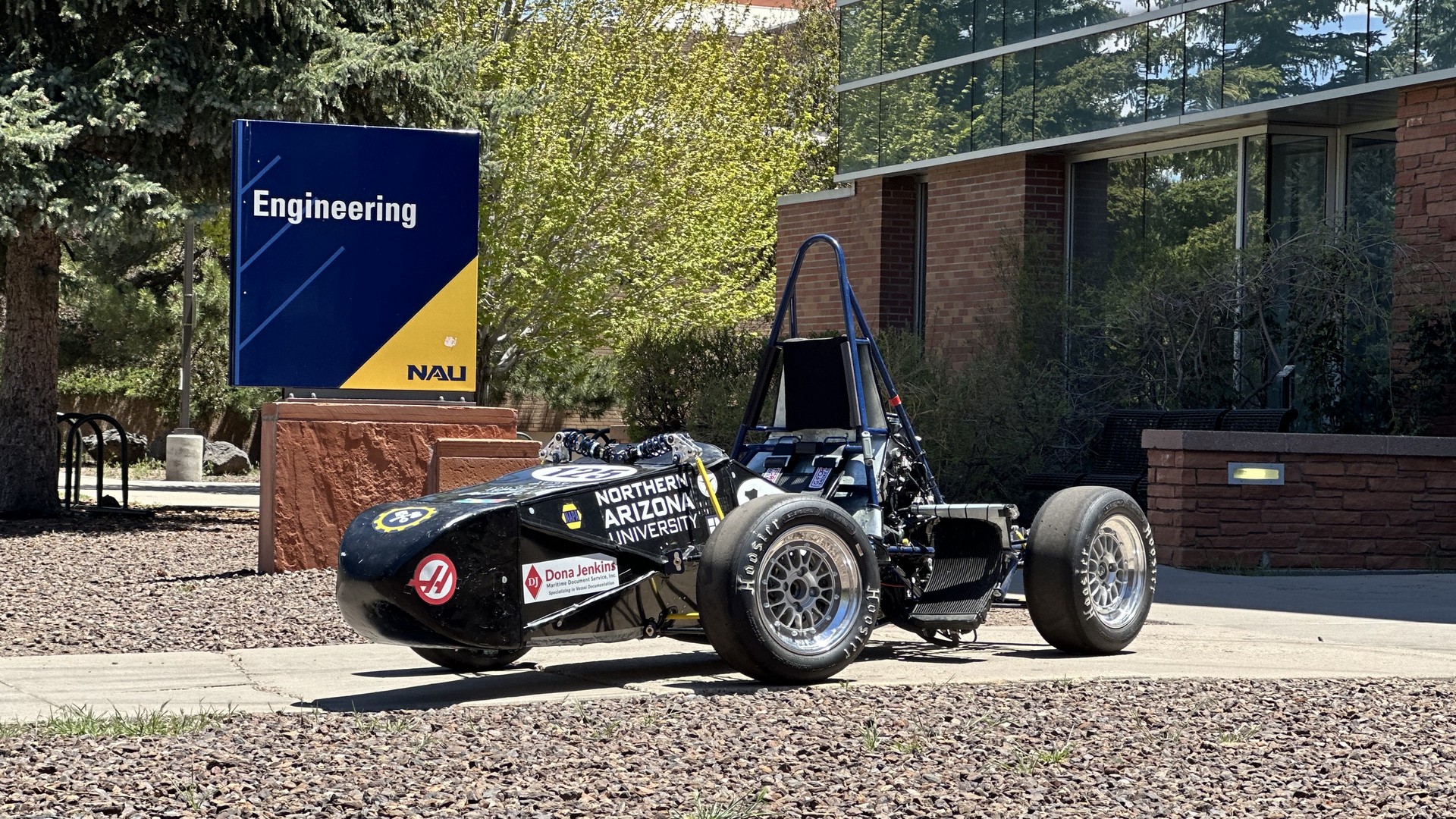
Formula SAE is a collegiate competition in which students are challenged with designing, building, and racing small Formula-style vehicle. The competition isn’t just about who has the fastest car; design, management, and marketability are all assessed as well. From streamlining design and manufacturing processes to cultivating leadership in project management and communication, students involved in NAU’s FSAE program learn to overcome the same challenges that are encountered by professional racing teams.
NAU FSAE gives students much more than an opportunity to build a race car. Our team provides the chance to engage in a complete engineering and design process. Team members learn not only how to build and fabricate, but also how to plan and manage budgets, comply with strict regulations, and market the team and the car. The skills learned at the NAU Formula SAE shop cannot be found in a classroom environment, yet are critical to professional success.

1. Design Event: Teams present their vehicle's engineering design to a panel of judges, explaining the rationale behind design decisions, innovations, and the trade-offs made to meet competition requirements. The judges assess the depth of engineering knowledge and the overall vehicle design.
2. Cost and Manufacturing Event: Teams submit a detailed cost report for their vehicle, covering all parts, materials, and manufacturing processes. The event evaluates cost efficiency, production feasibility, and the team's understanding of mass production techniques.
3. Business Presentation Event: Teams deliver a sales pitch as if they were presenting their car concept to potential investors or a company for production. The presentation focuses on the business plan, marketability, and financial viability of the car.
1. Acceleration: Vehicles are tested for their ability to accelerate from a standstill over a straight distance (usually 75 meters), with the fastest time winning.
2. Skidpad: Cars navigate a figure-eight course to evaluate lateral acceleration and cornering ability, providing insight into the vehicle’s handling and tire grip.
3. Autocross: A short, twisty track tests the car’s agility, handling, and acceleration as it navigates tight turns and straight sections, with the fastest lap time determining the winner.
4. Endurance: The most challenging event, endurance tests the car’s reliability, fuel efficiency, and durability over a 22-kilometer race. It simulates the demands of real-world racing with a focus on vehicle longevity.
5. Fuel Efficiency: Conducted during the endurance event, this test measures the amount of fuel used, awarding points to cars that complete the endurance course using the least fuel, thus encouraging efficient design.